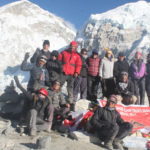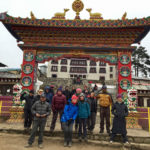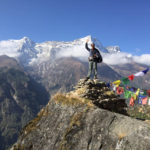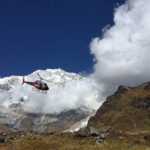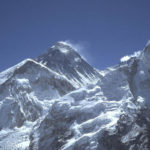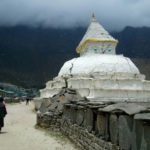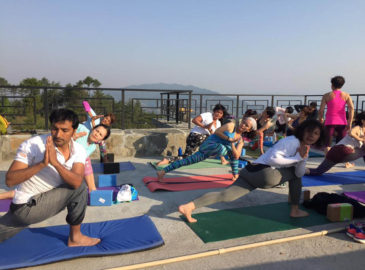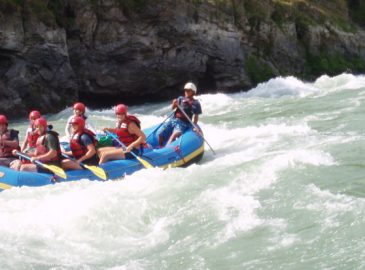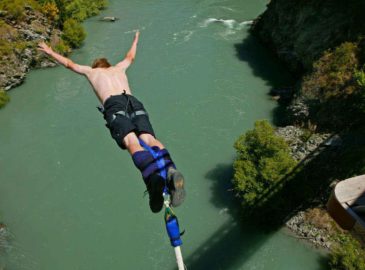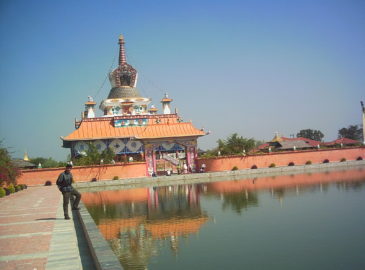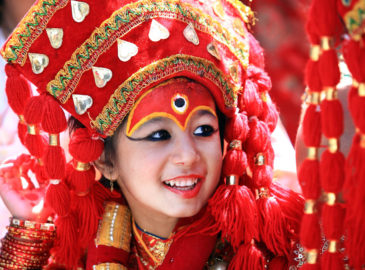Everest Base Camp Trekking
$1395 USD
14 Days
-
12 Nights 13 Days
C (Strenious)
5545
Sept - May
-
Sightseeing and Trekking
-
IncludeAll transportation by a car, domestic flight to and from Lukla within Nepal.All listed twin occupancy accommodation within Nepal.Meals (breakfast, lunch and dinner) while on trekkingAccommodation with bb plan for 2 nights in KathmanduDrinks included with meals are teas, hot lemon and coffeeGuide, porter, driver wages and insuranceAll necessary documents (trek permits, TIMS, tax)All entrance fees to listed sites and places of interest.
-
Not IncludedInternational airfare to and from NepalLunch & Dinner in KathmanduAll alcoholic & bottled drinks (beer, wine, spirits, sodas, juices etc) and hot shower during the trekBetween meal snacks and drinks while on trekPersonal shoppingOption donations (temple, gompas, assistance projects etc)30 days visa,Personal travel insurance including emergency mountain rescue evacuation.
Tour Plan
We meet at the airport, transfer to Hotel (3 star Hotel), free time. A short briefing about the program and trek.
Breakfast at 6:30 am leave for the airport at 7:15 to fly to Lukla (2860 m). We meet all our porters in Lukla and start the trek from there. The trail is gradually descends to Cheplung, Ghat until Phakding. Overnight in Phakding.
The trail continues north up the Dudh Kosi Valley through a forest of rhododendron, magnolia, and giant fir-trees. En route we cross the spectacular suspension bridge high above the confluence of the Bhote Kosi and the Dudh Kosi,. The last part to Namche is steep and long from where we can have first glimpse of Everest, eventually we will reach the remarkable Sherpa capital perched high on the hillside.
We can spend the day by taking a side trip to Everest View Hotel (2.5 hrs). or by visiting the National Park Visitor Center on the hill above Namche or by simply resting and browsing in the shops in the town. Namche is a fascinating place simply to ‘hang out.
From Namche we have to trek northeast on a direct line to Everest,. Now the views starts to open up, ahead of you can see Ama Dablam (6856m), as well as Everest but it is still far off in the distance. The view becomes more dramatic as the climb approaches to a beautiful settlement of Tengboche which is surrounded by a protected juniper forest. Stay at teahouse.
From Tyangboche we continue our walk to the Imja Valley and Lobuche River before ascending to Dingboche. It is a picturesque village with beautiful barley, potato and buckwheat fields.
It is important to spend a day in Dingboche, that will help us to acclimate to the high altitude. Instead of staying doing nothing we can either hike to Chukung valley or climb a ridge located behind the village to get tallest peaks of Lhotse, Makalu, Cho Oyu, Cholatse…
Spectacular sceneries of Himalayas & Peaks can be seen all direction around you when you are walking. You arrive Dugla at 4620m before you reach to Labuche,you can take lunch at Dugla. You can see the wonderful superv views of Mt.Lhotes, Mt. Nuptse, Mt. Pumori & other many Himalayas from Labuche. Dinner & overnight.
Start early in the morning to get Everest Base. After 3 hours of walk we stop for breakfast at Gorekhchep. The trail from Gorakhshep to Everest Base Camp is a lot tiring through the turnings and over the ice but rocks and sand. EBC is wonderful to touch the ice from world’s novel peak in order to make your dream true.
Start early in the morning to get Kalapattar. This is the place from where you can see the wide view of the Everest and its magnificent views, world’s Longest Khumbu Glacier. We still have long way down to Pheriche.
This part of the trail is full of natural beauties. We will be walking through the Namche Bazzar. We all group meet in Namche.
Today we walk all the way down and flat. It is relatively easier walks.
After breakfast we walk to Ghat & Lukla.The trail is easy going to Ghat, then it is gradual ascending from Ghat to Lukla. Arrive Lukla.Dinner & overnight.
Additional Information
Fitness
To trek to Everest Base Camp you do not need to be a super athlete nor a mountaineer but a few weeks of training, prior to arriving in Nepal, will enhance your experience. It will not be more enjoyable spending the trip of a lifetime struggling to walk the trails every day when a little sensible preparation before you arrive would make the trails so much more rewarding.
Food
There are varieties of choices of western and Asian food, dishes or a mixture of both in all the major destinations you visit. During a trek, you can expect 3 full meals a day as well as regular tea and coffee breaks on both tea-house style or camping treks where food is freshly prepared daily. During our tea-house trek, we offer a selection of tea-houses. Most teahouses cook a delicious range of mostly vegetarian fare. Of course, it depends on the season and destinations you choose. But most tea-houses offer pasta, tuna bakes, noodles, potatoes, eggs, dhal bhat, bread, soups, fresh vegetables and even some desserts like apple pies, pancakes, and some interesting attempts at custard.
Best time
Everest Base Camp trek can be done in Autumn (Sept-Nov) when you can expect better visibility, the air is fresh, and the weather is perfect and that the Nepalese most important festivals (Dashain and Tihar) are marked during this season The best season offering excellent weather and tantalizing mountain views. Or in Spring ( March – Mary) which is particularly lovely as the mountain slopes are covered with beautiful and colorful flowers and still have plenty of high snow to enhance your photos. The temperature is quite moderate and the mountain views are excellent.
Accommodation
There are varieties of choices of western and Asian food dishes or a mixture of both in all the major destinations you visit. During a trek, you can expect 3 full meals a day as well as regular tea and coffee breaks on both tea-house style or camping treks where food is freshly prepared daily. During our tea-house trek, we offer a selection of tea-houses. Most teahouses cook a delicious range of mostly vegetarian fare. Of course, it depends on the season and destinations you choose. But most tea-houses offer pasta, tuna bakes, noodles, potatoes, eggs, dhal bhat, bread, soups, fresh vegetables and even some desserts like apple pies, pancakes, and some interesting attempts at custard.
Medical Info
Care in what you eat and drink is the most important health rule. The number one rule is don’t consume the water including ice.
Medical Kit:
1. A simple but adequate medical kit can be most useful without taking much space in your baggage. The following is recommended as a tried and true list of items.
2. Aspirin or Panadol – for pain or fever.
3. Antihistamine – useful as a decongestant for colds, allergies, to ease the itch from insect bites and stings or to help prevent motion sickness.
4. Antibiotics – useful especially while trekking well off the beaten track but they must be prescribed.
5. Kaolin preparation ( Pepto – Bismol), Imodium or Lomotil – for stomach upsets.
6. Rehydration mixture – for treatment of severe diarrhea.
7. Antiseptic, mercurochrome and antibiotic powder or similar “dry” spray – for cuts and grazes.
8. Calamine lotion – to ease irritation from bites or stings.
9. Bandages and band – Aids – for minor injuries.
10. Scissors, tweezers and a thermometer
11. Insect repellent, sunblock, suntan lotion, chapsticks and water – purification tablets.
12. Throat lozenges (Strepsils).
13. Moleskin.
15. Sulamyd 10% eye drops.
16. Acetaminophen (Paracetamol)
17. Antacid tablets.
18. Diamox (altitude sickness – can be bought in Kathmandu)
19. Sterile Syringe set (anti-AIDS precaution)
Equipment list
1. Lightweight walking boots. If a new one is being bought, ” walk then in” to avoid blisters. Also bring spare laces.
2. A pair of track shoes. To wear in the camp at night or when the boot is wet.
3.Warm jacket. Fiberfill or down should be adequate. This is especially necessary during winter from December to February.
4. A rainproof jacket with hood or a poncho. Get the one that is guaranteed waterproof.
5. Woolen shirts and thick sweaters. During winter months, December through February these items are essential. Thick sweaters – can be purchased in Kathmandu.
6. A pair of lightweight/ heavyweight trousers. Jeans are unsuitable to wear on treks. Cheap loose cotton pants are available in Kathmandu.
7. Heavyweight trousers are useful higher up in the mountains in the morning and at night. Windproof/ waterproof trousers are necessary on all treks going above 10.00ft. Thermal underwear. These are excellent to sleep in at night in the winter months thermal underwear is quite invaluable.
8. A tracksuit is useful for wearing in camp and in a tent.
9. pair of loose-fitting long shorts/ skirts.
10. 1 lightweight long-sleeved – shirt is particularly suitable for avoiding sunburn.
11. A woolen hat to wear in the morning and at night. During winter it is an essential item. A sunhat and ensure it has a wide brim to cover the face and neck.
12. A pair of gloves. Leather with lining and woolen are best.
13. 1 pair of sandals to wear in the cities and in camp.
14. 2 pairs of thin and 2 pair of thick woolen socks.
15. “Underwear” normal quantity and swimming costume, hankies.
16. Duffle bag or kit bag to carry to gear while trekking – Daypack: This is a small rucksack to carry personal requirement for the day e.g. toilet items, camera, film towel, soap, a boot, etc.
17. Water bottle.
18. Snow glasses and sunglasses
19. 2-4 large plastic bags to separate clean clothes from dirty ones. 6-10 smaller plastic bags to dispose of garbage.
20. Wallet and /or money belt with compartment for coins.
21. Toiletries with large and small towels. Toilet paper can be by in Kathmandu and some villages in the mountains.
22. Small headlamp and/ or torch with spare batteries and bulbs candles and lighter to burn toilet paper.
23. Snow gaiters essential during wither and all treks going over at other times.
Cost (How much does it cost?)
Please contact us or fill the booking form to know about the cost of this trek.
Recent Post
-
Langtang Valley Trekking
Duration: 08 days
Popular Trekking
-
Everest Panorama Trekking
Duration: 8 days
-
Gokyo Lake Trekking
Duration: 12 days
-
Everest Base Camp Trekking
Duration: 14 days
-
Jomsom Muktinath Trekking
Duration: 14 days
Extend My Holidays
If you like to extend your holidays in Nepal with your short time to experience the high mountains and Nepalese culture you can choose these short and easy extensions trips. Also for those who are inexperience in walking up and down on the mountain the following options are the best to choose. Click on the link below to get its information.

